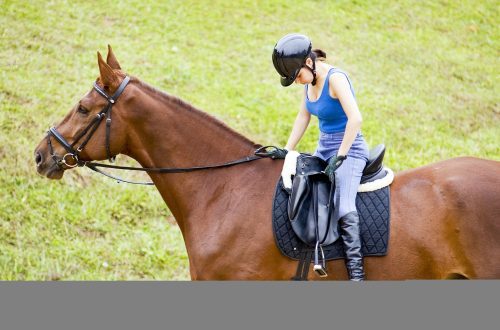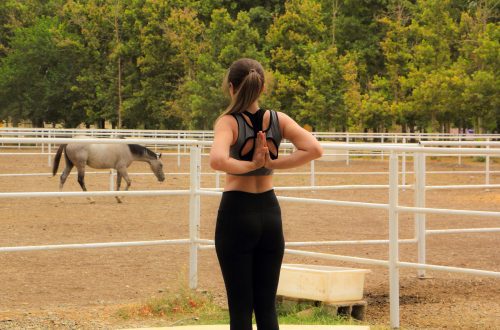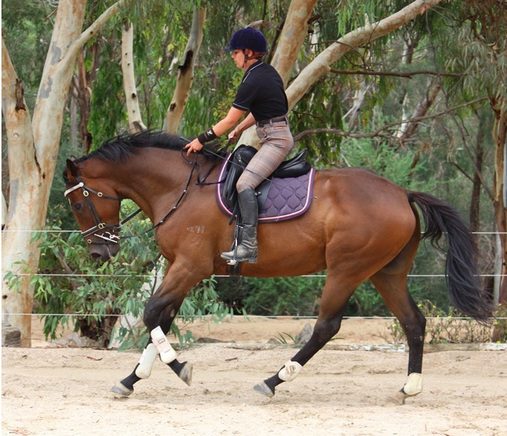
What happens if you soften the inside rein on the circle?
What happens if you soften the inside rein on the circle?
The answer is nothing: the pace, rhythm and bend of the horse must not change. If this happened, you made a mistake!
Don’t pull the horse’s nose into the circle!
Many riders (even at advanced levels) pull the horse’s nose into the circle when riding in a circle. In fact, they cannot imagine that it is possible to maintain a circle or turn a horse without increasing the pressure on the inside rein.
Keep in mind that the inside rein can serve as an emergency brake, as shown in the video below:
If you try to move the horse forward in a circle while using the inside rein, pulling the horse by the nose into the circle, it will be equivalent to pressing the gas and brake pedals at the same time. In the short video below you can see the rider doing just that. Notice how the trainer successfully guides the rider and requires him to engage his own inside leg to activate the horse’s inside hind leg. But because the rider is also hanging on the inside rein, trying to “keep the horse on the circle,” the horse alternates between going forward and slowing down. This is very embarrassing for her.
If you try to keep your horse on the trajectory of the circle by pulling on the inside rein, you will not give his energy to move, his forward movement will be jerky, the gait will be distorted, as shown in the following video:
So, how do you move a horse in a circle or turn it correctly? Yes, the answer will surprise no one: “Inside leg on outside rein.”
Look at the illustration:
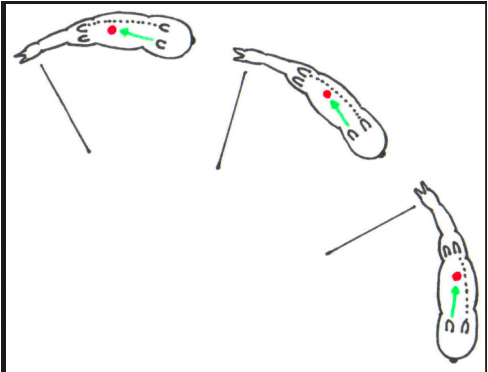
Notice how the horse is arched in the body and his head and neck are relatively straight. The inside hind leg steps under the body towards the outside front. To achieve this, you must first get the horse to bend under the influence of the inside leg. As you ride, you should feel the horse bend around your leg.
If you simply continue to apply pressure with your inside leg, the horse will begin to shift his body outward from the path of the circle. To prevent this from happening, you must help yourself with a stable outside rein to keep the horse’s shoulder from falling out, and with the outside leg you keep the horse’s outside hip from going off track.
Now add a little more pressure with your inside leg, lift the horse’s chest slightly with the heel (or soft spur). You should feel the energy coming to your outside rein from your horse’s inside leg. This is how you should hold your horse while going in circles or turning.
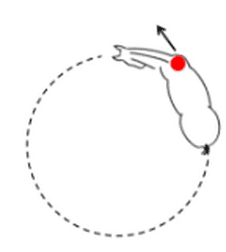
Notice I didn’t say anything about the inside motive. Because you don’t really need to pull the horse’s nose inward to make him bend in circles or turn. The inside rein can be gently worked, polishing the movement of the horse, softening his jaw. If instead you try to lead the horse into a circle or hold him there with the inside rein, he will fall over his outside shoulder, his neck will bend against his body, he will hang on your hands and his movement will become stiff and uncomfortable.
Now try to execute an exercise: while on the circle, gently move your inner hand forward WITHOUT CHANGING ANYTHING ELSE.
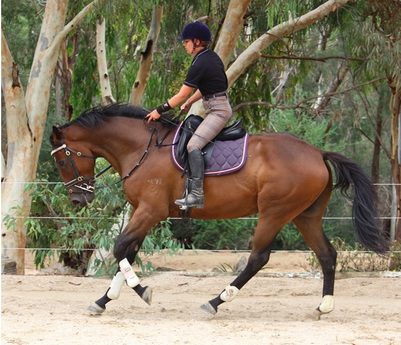
If your horse is truly balanced on the outside rein (rather than hanging on the inside rein and being held by you on the circle), he will continue to trot or gallop forward around the circle while maintaining his frame (see photo above).
You can watch it in the video below. The rider gives the inside rein to trot in a circle. By softening the inside rein, we also teach the horse NOT to lean on your hands. You tell your horse, “Don’t expect me to hold your head for you.”
And here is a video where the rider softens the inside rein at a canter in a circle:
Finally, pay attention to the fact that when driving in a circle or making a turn, your hands should always remain at the same level relative to each other. A common and pernicious mistake that riders often make when riding a turn or corner is to pull the inside rein towards themselves and the outside rein forward. Your hands should always remain at the same height and level with respect to each other on either side of the horse’s withers. The rider on the left holds the reins correctly while cantering in circles. In the photos below, the rider on the right is pulling the inside rein back while the outside rein is pulling forward – this is not correct.

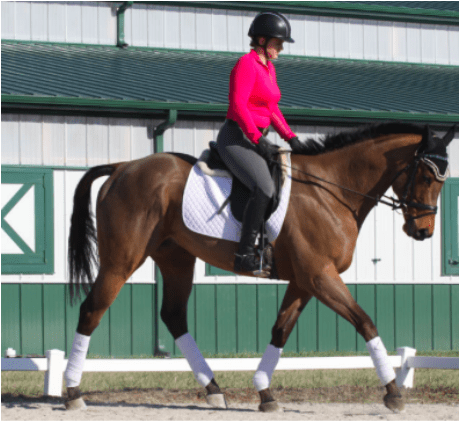
Good luck in training!
Denise Cummins (source) translation by Valeria Smirnova.




